Saturday, March 30th, The Dear Hunter performed part two of their Migrant album release at The Sinclair. The Dear Hunter originated as Casey Crescenzo’s side project during his time off from The Receiving End of Sirens. For this record, the group linked up with producer Mike Watts under Cave & Canary Goods, Crescenzo’s sub label under Equal Vision Records.
The live group consists of Casey Crescenzo (guitar and vocals), Connor Doyle (guitar and vocals), Rob Parr (guitar and vocals), Nick Sollecito (bass), Max Tousseau (pedalboards) and Nick Crescenzo (drums). With the exception of Nick Crescenzo, the entire group sported Fender guitars ranging from Strats to Jags, with Sollecito rockin’ a vintage Precision bass. This equipment setup provided the group with a wide variety of of tones, contributing to their notoriously organic live sound.
The Dear Hunter introduced their set with tracks “In Caude Venenum,” “City Escape” and “The Progression.” Throughout the first half hour of the performance, the group switched seamlessly between Acts I, II and III. Their ability to still play tracks off their esteemed conceptual records shows how significant they are to the development of the group. This shift between Acts also showed The Dear Hunter’s evolution from Progressive to Indie Rock.
As the set continued, the group introduced a few tracks off their renowned Color Spectrum including “Echo,” “Filth And Squalor” and “Misplaced Devotion.” Their light show corresponded to the color of the track that was being played, which acted as a creative visual mantra during the performance – a splash of yellow here, a hint of orange there. Another unique visual design feature that contributed to the set was Tousseau’s lamp strategically placed next to his setup, illuminating a bright light during darker tracks, such as “1898.”
The group introduced a few new tracks, including “An Escape” and
“Shouting At the Rain.” In an interview with Billboard magazine, Crescenzo states, “making ‘Migrant’ was the single most rewarding experience I’ve had in the studio.” From their live performance, it’s easy tell that the group is more of a live act than a studio recording act through their incorporation of live solos, improv grooves and guest vocals. One simply does not do the music justice until they’ve seen The Dear Hunter live.












